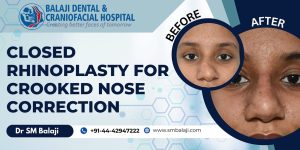Patient develops a swelling in his anterior upper jaw
This is a 24-year-old patient from Mysore in Karnataka, India. He had developed caries in his maxillary front teeth. These included the upper right central incisor, left central and lateral incisors and the left canine. This was approximately 7-8 years ago.
Having neglected it, he developed pain and ultimately required root canal treatment of the four teeth. His symptoms had subsided following the root canal treatment. A ceramic bridge had been placed over the crowns of the four teeth.
Over the last three to four months, the patient had developed a swelling in relation to the four teeth. This swelling had slowly grown in size. There was no pain associated with the swelling. He had however developed mobility of the involved teeth.
Alarmed at the prospect of losing his teeth, he had presented at a local dentist. The local dentist had examined the patient and ordered for x-rays.
An x-ray had been obtained, which revealed radiolucency in relation to the four involved teeth. Realizing that this was an extensive periapical cyst, the dentist had explained the treatment needed to the patient. He had then referred the patient to our hospital for treatment.
Specialty center for various cyst surgeries in India
Our hospital is a specialist center for cyst surgery in India. We are a renowned center for dentigerous cyst surgery in India. Scores of patients have undergone odontogenic keratocyst surgery at our hospital. Jaw reconstruction surgery is a specialty offering at our hospital.
Initial presentation and evaluation at our hospital
Dr SM Balaji, facial reconstruction surgeon, examined the patient and obtained a detailed history. He ordered comprehensive imaging studies for the patient including a 3D CT scan. This revealed a radiolucency extending from maxillary right central incisor to the left canine. These were the teeth that had undergone root canal therapy many years ago.
Treatment planning for total removal of the cyst
The swelling involved the anterior maxilla and palate. There was also evidence of buccal and palatal perforation along with a communication with the left maxillary sinus. A biopsy was done, which confirmed the diagnosis of a periapical cyst.
It was decided to do a complete cyst enucleation along with extraction of the involved teeth. The involved teeth had grade III mobility. This would result in a large bony defect, which would be reconstructed using a costochondral graft.
Dental implant surgery would be performed after complete consolidation of the grafts with the surrounding bone. Ceramic or zirconia crowns would be placed on the dental implants after osseointegration of the implants with the bone.
Successful surgical rehabilitation of the patient
Under general anesthesia, a right inframammary incision was made followed by dissection down to the ribs. A costochondral rib graft was then harvested. This was followed by a Valsalva maneuver, which demonstrated a patent thoracic cavity. The incision was then closed with sutures.
Attention was then directed towards the periapical cyst surgery. A crevicular incision was placed in maxilla in relation to the defect. This was followed by elevation of a mucoperiosteal flap. The cystic lesion was surgically identified. Complete cyst enucleation was done along with removal of involved teeth.
Bleeding in the cavity was controlled with the use of electrocautery. This was followed by flushing of the cystic cavity with an antibiotic solution. The previously harvested costochondral grafts were then used to reconstruct the bony defect.
These costochondral grafts were fixed using titanium screws. Hemostasis was achieved and wound closed with resorbable sutures. The patient was then extubated and taken to the recovery room in stable condition.
Postoperative instructions for complete rehabilitation
The patient was advised to return in 3-4 months for placement of dental implants. This would later be followed by placement of dental crowns for esthetic and functional rehabilitation. The patient expressed understanding of the instruction and was happy with the surgical results.
Surgery Video





